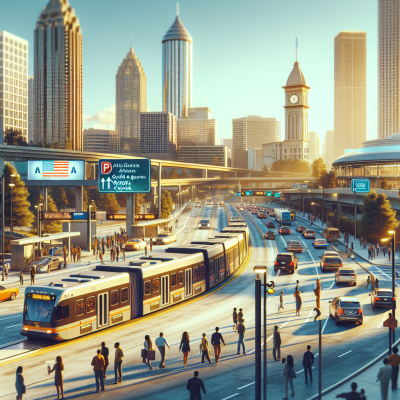
Bicycle and Pedestrian Travel
Cycling in Atlanta
Atlanta, although known for its bustling cityscapes and heavy traffic, has made strides in becoming more bike-friendly, offering opportunities for both recreational and commuter cyclists.
Popular Cycling Routes
Atlanta boasts an array of cycling routes that cater to different skill levels and interests. The Atlanta BeltLine Eastside Trail stands out as a favorite among locals and visitors alike. This paved path is perfect for leisurely rides, connecting several neighborhoods with numerous dining options, parks, and art installations along the way. It provides a scenic two-mile stretch, ideal for casual cyclists.
The Silver Comet Trail, starting in Smyrna, is another must-ride route offering over 60 miles of traffic-free pathway, extending beyond Atlanta's city limits into Alabama. It's perfect for long-distance riders seeking to escape the city's hustle. For a taste of Atlanta's historic districts, the Peachtree Road ride challenges cyclists with its inclines but rewards them with views of the city's iconic architecture.
Bike Rentals and Shared Bike Programs
For those without their own wheels, Atlanta offers several bike rental and sharing options. The Relay Bike Share program is a convenient choice, with numerous stations throughout the city. Offering easily identifiable blue bikes, this program allows riders to pick up and drop off bikes at any station, promoting a flexible and spontaneous cycling experience.
Local bike shops, such as Atlanta Bicycle Barn, also provide rental services, often coupled with insider tips on the best local trails and maintenance services to ensure a smooth ride. Whether it's for an afternoon or an extended rental period, these options ensure everyone can enjoy cycling in the city.
Pedestrian Walkability
In recent years, Atlanta has put significant effort into improving its walkability, making it easier for pedestrians to explore the city safely and comfortably.
Key Walking Trails and Parks
Among Atlanta's many attractions, key walking trails such as the Atlanta BeltLine and Piedmont Park are standouts. Piedmont Park, often compared to New York's Central Park, serves as a green oasis within the city. It offers wide sidewalks, shaded pathways, and lush landscapes, drawing walkers, joggers, and families throughout the year. The park hosts various events and festivals, further enhancing its appeal as a pedestrian-friendly destination.
The Atlanta BeltLine's multi-use trails connect a series of neighborhoods and parks, offering both scenic and practical routes for walkers. This innovative project aims to transform former railway corridors into dynamic public spaces, encouraging pedestrian traffic and community engagement.
Safety Tips for Walkers
Walking in Atlanta can be an enriching experience if approached with safety in mind. Here are some essential tips for walkers:
-
Stay Alert: Be aware of your surroundings, especially at intersections and when crossing streets. Atlanta's traffic can be unpredictable, so it's vital to make eye contact with drivers when possible.
-
Use Pedestrian Signals: Always use designated crosswalks and adhere to pedestrian signals. Some intersections have countdown timers to indicate how much time remains to cross safely.
-
Walk in Groups: When possible, walk with others to enhance your visibility and safety. Group walking is also an excellent way to socialize while exploring the city.
-
Wear Visible Clothing: At night or in low-light conditions, ensure you're visible to drivers. Reflective clothing or accessories can significantly improve your safety.
-
Plan Your Route: Use maps or apps to identify pedestrian-friendly routes, highlighting sidewalks and crosswalks. Knowing your route in advance can help avoid areas with sparse pedestrian infrastructure.
By integrating these tips, both cyclists and pedestrians can enjoy Atlanta's landscapes while prioritizing their safety and comfort. With ongoing improvements and community engagement, the city continues to evolve as a vibrant hub for non-motorized travel.








